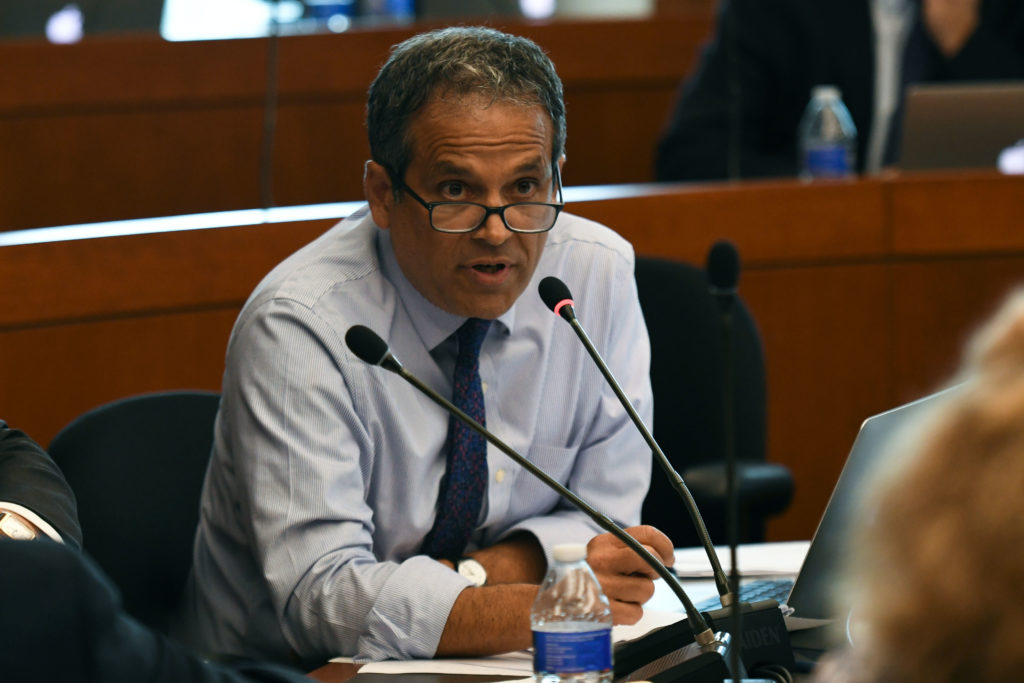The University earned about $10 million more from the federal government this year since moving research projects to on-campus buildings six years ago, officials said.
Officials began a push to move research projects to campus in 2012, hoping the shift would increase federal reimbursement for indirect costs – including administrative and building expenses – incurred during research projects. The government reimburses up to 26 percent of indirect costs for off-campus research projects but can return nearly 60 percent for on-campus endeavors.
In 2011, the University earned $21.6 million in indirect cost recoveries – but that number jumped to more than $30 million in 2018, Provost Forrest Maltzman said. In 2011, officials projected a $55 million net increase in indirect cost recoveries over a decade.
“The increase in indirects is related to a number of factors, all part of a long-term strategy to increase research-related revenues,” he said in an email.
Maltzman said nearly all of GW’s research labs are now located on the University’s three main campuses, but six years ago several engineering and public health projects were housed in off-campus rental facilities. He said the share of total on-campus research projects has increased by nearly 25 percent between 2013 and 2018.
“The decision to co-locate researchers on the Foggy Bottom campus is in the best interest of students and faculty to enhance collaborations,” he said.
Maltzman added that money from indirect cost recoveries does not cover the full cost of funding for the University’s research nor the costs of new campus buildings, like the Science and Engineering Hall, which was completed in 2014 and cost $275 million. Officials said six years ago that about three-fourths of all indirect cost recoveries over a decade would fund the building.
Maltzman declined to say whether the University anticipated bringing any more researchers to campus over the next few years. He also declined to say why certain researchers were selected to move on campus.
Several of the University’s peer schools earn more in indirect costs than GW because of a high volume of on-campus research and higher federally negotiated indirect cost recovery rates. The University of Southern California and New York University each receive about $150 million in reimbursements, while Boston University and Northeastern University receive about $83 million and $28 million, respectively.
Harald Griesshammer, a professor of physics and a member of the Faculty Senate, said the University has little control over whether or not research is conducted on campus because the grant-making agency overseeing the project ultimately decides the location. But he said the University often brings in more research dollars for on-campus research projects as opposed to projects off campus because the former yields more than twice the amount of indirect costs.
Griesshammer said hosting research projects can be more costly when the University is responsible for providing and maintaining lab equipment and lab space. But he added that empty labs, especially unused spaces in the Science and Engineering Hall, should be available to active researchers to encourage more on-campus projects.
“Research at GW, with the GW name attached to it, is a great way to promote excellence,” he said. “We are in it for the educational value, for the intellectual value, not for the money.”
Michael Bukrinsky, a professor of microbiology, immunology and tropical medicine, said expanding the amount of available research space would especially benefit researchers in Ross Hall who have limited space to conduct their research endeavors.
Bukrinsky said a series of renovations for Ross Hall, including a $3.9 million project that started last year, has provided updated facilities and more advanced equipment to complete on-campus projects and draw in students. He said the renovations – on top of creating more operating labs from empty space in the Science and Engineering Hall – could bring in even more research dollars because they create space for more on-campus research projects.
“That’s definitely a game change in our research capacity,” he said. “This is something that made us more productive, more successful and allowed us to establish more core facilities on campus.”
Bukrinsky said renovating and expanding lab spaces on campus will also help attract prospective researchers.
“When people come for interviews, they always look at the space available,” he said. “If you show them just one tiny room then nobody would come here, so you need to show them our resources and our available core facilities.”
Parth Kotak contributed reporting.





